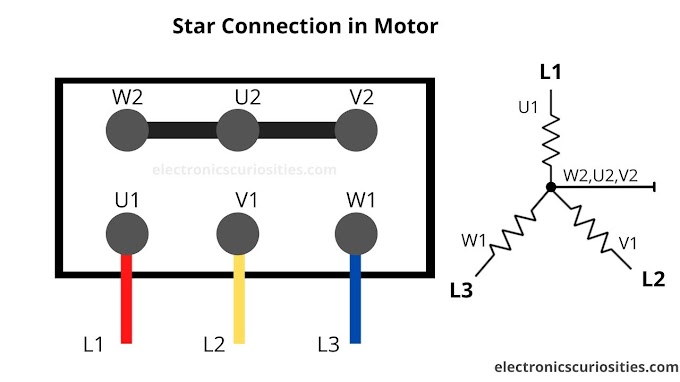Software for Antenna Designing: Enhancing Connectivity and Performance
In today's interconnected world, antennas play a crucial role in ensuring reliable wireless communication. As technology continues to evolve, the demand for efficient and high-performing antennas has grown significantly. To meet these requirements, engineers and researchers rely on software tools specifically designed for antenna design. These software solutions enable the optimization of antenna performance, ensuring enhanced connectivity and signal strength. In this article, we will explore the importance of software for antenna design and highlight some popular tools used in the industry.
Table of Contents
- Introduction
- The Importance of Antenna Designing Software
- Key Features and Capabilities
- Popular Antenna Designing Software
- Case Studies: Real-World Applications
- Case Study 1: Antenna Design for Wireless Communication
- Case Study 2: Antenna Design for IoT Devices
- Advantages and Limitations of Antenna Designing Software
- Future Trends in Antenna Designing Software
- Conclusion
- FAQs
Introduction
Antenna design is a complex and intricate process that requires expertise in electromagnetics, physics, and engineering. Traditionally, antenna designs were developed through manual calculations and extensive prototyping. However, with the advancements in computer technology, software tools have emerged as invaluable aids in the antenna design process.
The Importance of Antenna Designing Software
Antenna designing software provides engineers with a range of tools and capabilities to streamline the design process, optimize performance, and reduce development time. Here are some key reasons why software tools have become indispensable in antenna design:
Enhanced Performance
Software for antenna designing enables engineers to simulate and analyze different antenna configurations, allowing them to optimize parameters such as gain, bandwidth, radiation pattern, and impedance matching. By leveraging these tools, engineers can fine-tune their designs to achieve superior performance, leading to improved connectivity and signal quality.
Cost and Time Savings
With software tools, engineers can rapidly iterate and evaluate multiple design options without the need for extensive prototyping. This significantly reduces development time and costs associated with physical testing. Additionally, software simulations can help identify potential issues early in the design process, avoiding expensive rework or redesign.
Design Optimization
Antenna designing software provides advanced optimization algorithms that automate the search for optimal antenna parameters. By defining design goals and constraints, engineers can leverage these algorithms to explore a wide range of design possibilities and identify the most efficient and effective solutions.
Key Features and Capabilities
Antenna designing software offers a wide range of features and capabilities to support the design process. Some common features include:
Geometry Creation
Tools to create antenna structures and define their dimensions.
Simulation
The ability to simulate antenna performance based on different inputs and parameters.
Analysis
Tools for analyzing key performance metrics such as gain, radiation pattern, impedance, and bandwidth.
Optimization
Algorithms for automating the optimization process and finding the best antenna configuration.
Integration
Compatibility with other software tools and formats to facilitate seamless collaboration and data exchange.
Popular Antenna Designing Software
Let's explore three popular software solutions widely used in the field of antenna designing:
There are several software tools available for antenna design, each with its own set of features and capabilities. Here are some popular options:
CST Studio Suite Antenna Design Software
CST Studio Suite is a widely used software package for electromagnetic simulation and antenna design. It offers a comprehensive range of tools for modeling and analyzing antennas, including a 3D electromagnetic solver and various optimization techniques.
HFSS (High-Frequency Structure Simulator) Antenna Design Software
HFSS is another popular software tool for antenna design and simulation. It is known for its accurate results and advanced simulation capabilities, particularly for high-frequency applications.
FEKO Antenna Design Software
FEKO is a versatile electromagnetic simulation software that offers various solvers and methods for antenna design. It provides a comprehensive set of tools for modeling, analyzing, and optimizing antenna systems.
ADS (Advanced Design System) Antenna Design Software
ADS is a powerful electronic design automation software that includes modules for RF and microwave design, including antenna design. It offers a wide range of simulation capabilities and optimization tools.
Sonnet Antenna Design Software
Sonnet is a specialized electromagnetic simulation software specifically designed for planar and microstrip antenna analysis. It is known for its accuracy and efficient modeling capabilities.
Antenna Magus: Antenna Magus is a software tool that focuses on antenna synthesis and design. It offers an extensive database of antenna designs and helps engineers select, design, and optimize antennas based on specific requirements.
These are just a few examples of software tools available for antenna design. The best choice for you depends on your specific requirements, the complexity of the antenna design, and your familiarity with the software.
Case Studies: Real-World Applications
Let's examine two real-world case studies that demonstrate the practical application of antenna designing software:
Case Study 1 - Antenna Design for Wireless Communication
In this case study, engineers utilized software tools to design an antenna system for a wireless communication application. By simulating different antenna configurations, they optimized the design for maximum signal strength and coverage. The software enabled them to analyze the impact of various parameters, such as antenna height and orientation, on the overall performance.
Case Study 2- Antenna Design for IoT Devices
In the context of Internet of Things (IoT) devices, compact and efficient antennas are critical. Engineers employed antenna designing software to create miniaturized antennas that met the stringent size and performance requirements of IoT applications. The software's optimization capabilities helped them achieve excellent connectivity within the limited physical space available.
Advantages and Limitations of Antenna Designing Software
While antenna designing software offers numerous benefits, it's essential to be aware of its advantages and limitations:
Advantages
- Faster design iterations and reduced development time
- Enhanced performance through simulation and optimization
- Cost savings by minimizing physical prototyping
Limitations
- Dependence on accurate input parameters for precise simulations
- The complexity of advanced features requiring expertise for optimal utilization
- Limitations in modeling certain physical phenomena, such as material behavior at extreme conditions
Future Trends in Antenna Designing Software
The field of antenna designing software is continuously evolving to meet the growing demands of wireless communication technologies. Some anticipated future trends include
- Integration of artificial intelligence and machine learning algorithms for more efficient optimization and intelligent design suggestions.
- Improved modeling techniques to account for complex electromagnetic interactions and materials with unique properties.
- Enhanced visualization and analysis capabilities to facilitate better insights into antenna performance.
Conclusion
Antenna designing software has revolutionized the way engineers approach the design and optimization of antennas. By leveraging these powerful tools, engineers can enhance performance, save time and costs, and drive innovation in the field of wireless communication. As technology continues to advance, the evolution of antenna designing software will play a crucial role in shaping the future of connectivity.
FAQs Frequently asked questions related to antenna design software
1) Is antenna designing software suitable for beginners? While some software tools offer intuitive interfaces, antenna designing software generally requires a solid understanding of electromagnetics and antenna theory to fully utilize its capabilities. Beginners may benefit from guided tutorials and training resources to get started.
2) Can antenna designing software be used for different types of antennas?
Yes, antenna designing software is versatile and can be used for various types of antennas, including dipole antennas, patch antennas, Yagi-Uda antennas, and more.
3) Are there free antenna designing software options available?
Yes, some software tools offer free versions or trial periods with limited functionality. However, for advanced features and comprehensive capabilities.
Thank You!
Have A Great Day!
Happy Learning!




